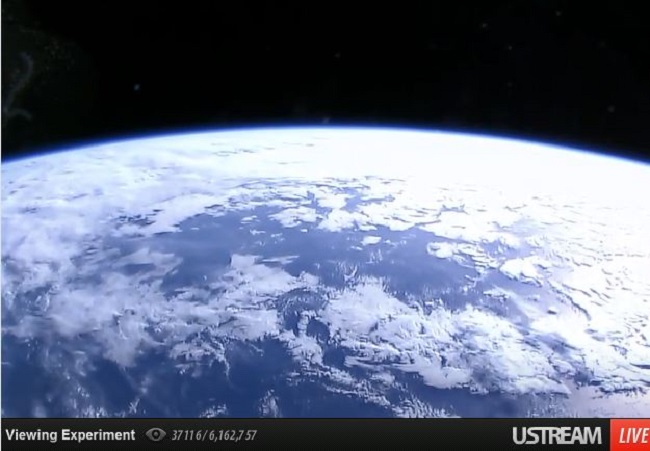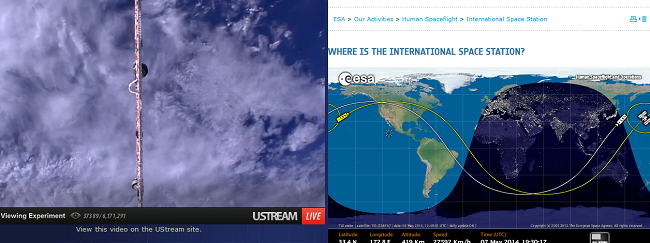
Four new high-definition viewing (HDEV) cameras were placed on the exterior of the International Space Station to transmit live video feed of Earth on May 7. Seeing the footage in real time was captivating, awing, and paradoxical, realizing that I was sitting somewhere within that blue sphere watching myself watch myself. For those of you who missed this opportunity, fret not, I’ve provided some video highlights below to give you an impression ─ with the help of your imagination ─ of what this felt like.
Do note that video feed swaps between all four cameras. Also black scenes = night side of the Earth; gray scenes = switching to the next camera, or the communications downlink from the ISS in not available at the moment.
According the NASA, the cameras were transported on April 18 as part of the SpaceX CRS-3 resupply mission to the ISS. The payload consisted of 2.5 tons of science equipment, vehicle hardware, spacewalking equipment, and crew supplies; the cameras were among the first items delivered in the experimental unpressurized “trunk” of the SpaceX Dragon spacecraft.
The agency’s objective in live-streaming the footage of Earth is to assess how susceptible the HDEV camera’s hardware is to the harsh radioactive environment of low-Earth orbit. After closely analyzing the effects of space on the video quality, engineers hope to learn which cameras are best suited for future space missions.
HDEV cameras are fixed in place and do not require any zooming, panning, or tilting mechanisms. NASA states that “the video imagery is encoded into an Ethernet compatible format for transmission to the ground and further distribution. In this format, the video can be viewed from any computer connected to the Internet.”

In addition to the live video stream, users who tuned into the Johnson Space Center’s website on May 7 were treated to a chart tracking the ISS’ orbit over the Earth in real time.
Via JSC.nasa.gov
Advertisement
Learn more about Electronic Products Magazine





